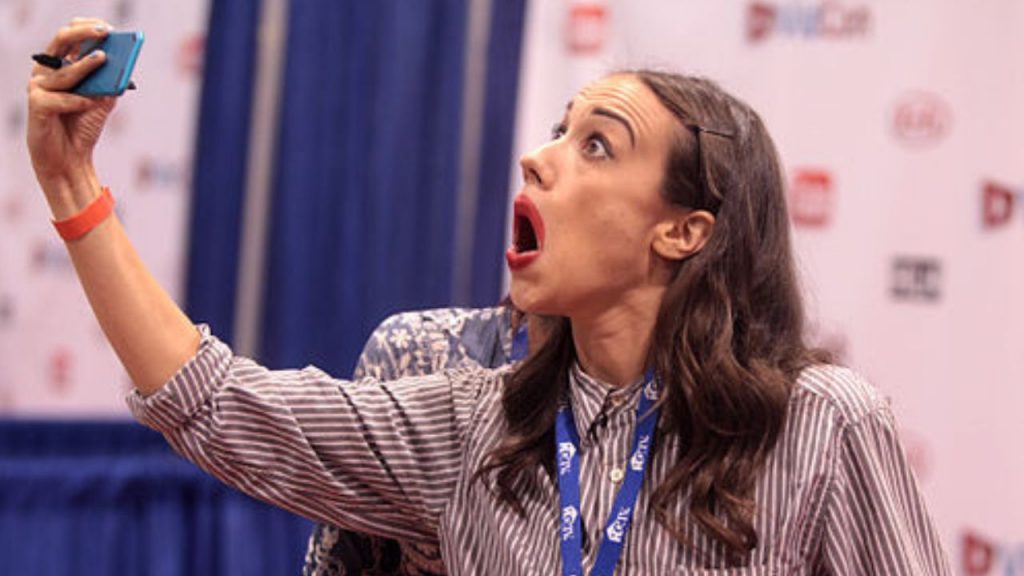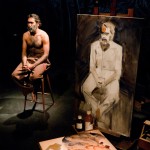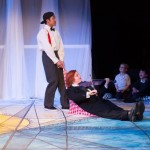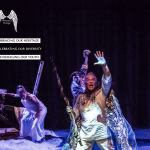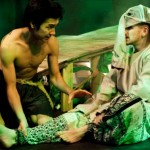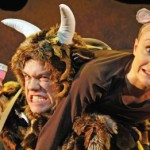Miranda Sings & Artful Talent: At Leicester Square Theatre
The phenomenon which is Miranda Sings at Leicester Square is the only show in the vicinity originating from being a YouTube sensation. Colleen Ballinger is a comic genius for creating the world of Miranda, the “relly tallented” star of the bite-size screen.
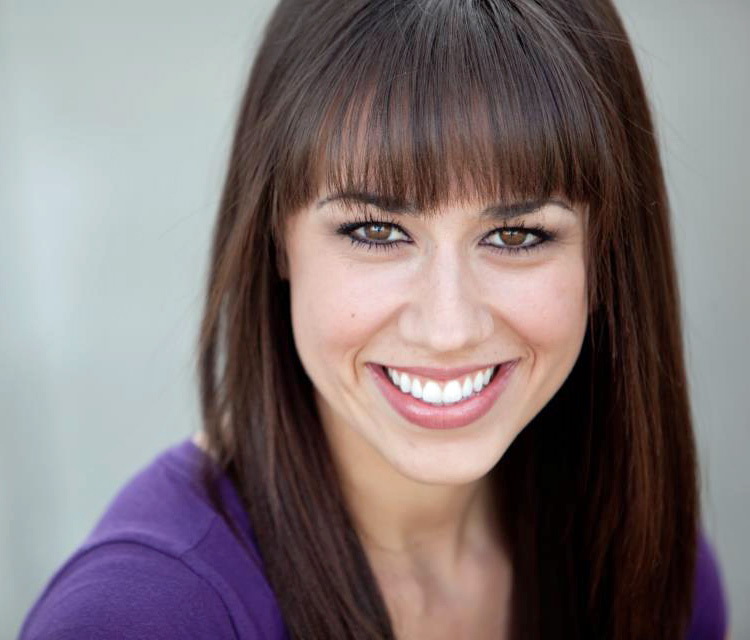
Miranda Sings, as its creator Colleen Ballinger tells The Times in 2010, is written as a character study of the girls in her college who “believed they could make a career out of putting videos on YouTube… clueless to the fact that they were terrible. The characters were so ridiculous, I wanted to make one of my own.”
And so a brand is born when Ballinger creates her talentless alter ego, Miranda, the presenter of over 200 YouTube videos of helpful hints, pop songs and voice lessons that have been viewed by millions online. The Miranda Sings brand also includes regular tours of Ballinger’s cabaret show around the world in venues like Leicester Square Theatre.
As I take my seat, however, I am only too aware that I am not a member of her YouTube generation, whom she refers to as her “Mir-fan-das”. On the other hand, I am not “hater” either, the term Miranda uses on her detractors who often leave obscene comments online for her to read. Instead, as a critic whose own children are part of her generation, I’m content to sketch out something of what I hear and see in Miranda Sings, as I would after returning from visiting a foreign country.
The first thing that strikes me in the show is how well the audience seems to know every detail about Miranda. I notice this as soon as the opening act gets underway and the presenter, Jason, mentions details about her that mean nothing to me but that are received with rapturous applause by the crowd. This is followed by an invitation for audience members to come up and show off their impersonations of her. Three hopeful candidates appear, all wearing her distinctive red lipstick, and perform her mannerisms in pulling faces, dancing badly and speaking in spoonerisms. During all this time, the communication between audience and presenter reminds me of friends who are sharing their common knowledge about someone they love.
The show then moves onto the second phase of warming up the audience when Colleen Ballinger herself comes out as Miranda’s understudy. Of course, I don’t get the joke at the time so I simply note how the young American performer possesses a magnificent voice. Her enactment of the popular comic song “Taylor, the Latte Boy” is wonderful.
The crowded auditorium, by contrast, is noisy with anticipation as Colleen begins to transform herself into Miranda. Applause explodes at every moment as she clips back her hair and covers up her elegant black lace dress with Miranda’s graceless fashion statement of tracksuit pants and bland long sleeve shirt.
The transformation sets the scene for Miranda to begin to share her unremarkable life through audience involvement, song and dance. For instance, an audience member is asked to read the mother’s part in a script she has written on her mother’s happiness at her birth. After this the audience is enthralled by a ridiculous song in which Miranda plays her baby self with her head through a hole in a bassinet.
I notice that the show is structured not like a variety show but more like a meandering river: the audience floats along through a slide show of Miranda’s childhood and teenage years, stopping to come ashore for intermission after the story of her first and only love. I see heads nodding as if to say “that’s right” and “yer, we know”.
In the second half, the subject moves from autobiography to Miranda explaining her recent successes. We are introduced to her dancers and, as she’s in London, she announces that she’s written a special tribute for the English on how Christopher Columbus discovered Britain! The room erupts at the ridiculousness of the announcement and the use of cardboard hats for props.
The ironic sense of history I feel at that moment makes me feel particularly old. However, the audience has no problem with it. They understand the effort she has made in sharing with them their common heritage of popular musical, films and the like: they are the children of London and Hollywood, of Peter Pan, Mary Poppins and celebrity Royal families. In that context, her ignorance of historical facts seemed infinitely forgivable when compared, for instance, to the righteousness and violent attitudes of her critics, whose hate mail Miranda also shares with her audience.
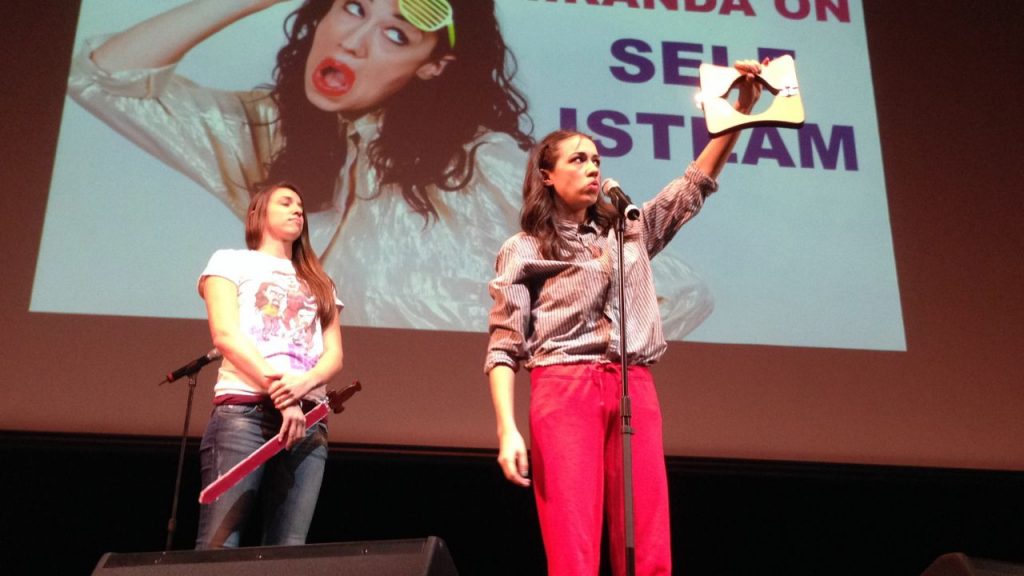
The final number is a magic trick in which her assistant puts a sword through her throat. Remarkably, Colleen Ballinger’s voice is heard every time the sword moves in and Miranda’s voice returns when it moves out. The audience seems to know that this is a signal to end the show. Farewells and standing ovations are made and given and then Jason invites loyal Mirfandas to form a line and meet Miranda in person. All but a few rush to do. However, I know it’s time leave.
A final irony for me exists in Colleen Ballinger’s relationship to her own talent. Only a good musician and singer could so consistently create the cacophony of sounds she makes alongside the notes of perfect pitch. Only a very good performer has the skills to move so consistently out of step and create the range of spoonerism in her language, more prolific than the original Mrs Malaprop in Sheridan’s The Rivals.
As I look back on the multitude that remains to see more of her, I know it will take me some time to fully understand what I have witnessed. In an intellectual sense, I know the parentage of her comic style: of her big clown-like red lips, of her bungling imperfections in Charlie Chaplin’s humble fool and of her contrived ugliness in the pantomime’s ugly dame. But she is none of these. All I know from seeing Miranda Sings is that between the hundreds of video clips and this “cabaret” exists a new kind of performance making whose talented creators have shown themselves worthy of this critic’s serious consideration.
Date reviewed: Thursday 12th September 2013
